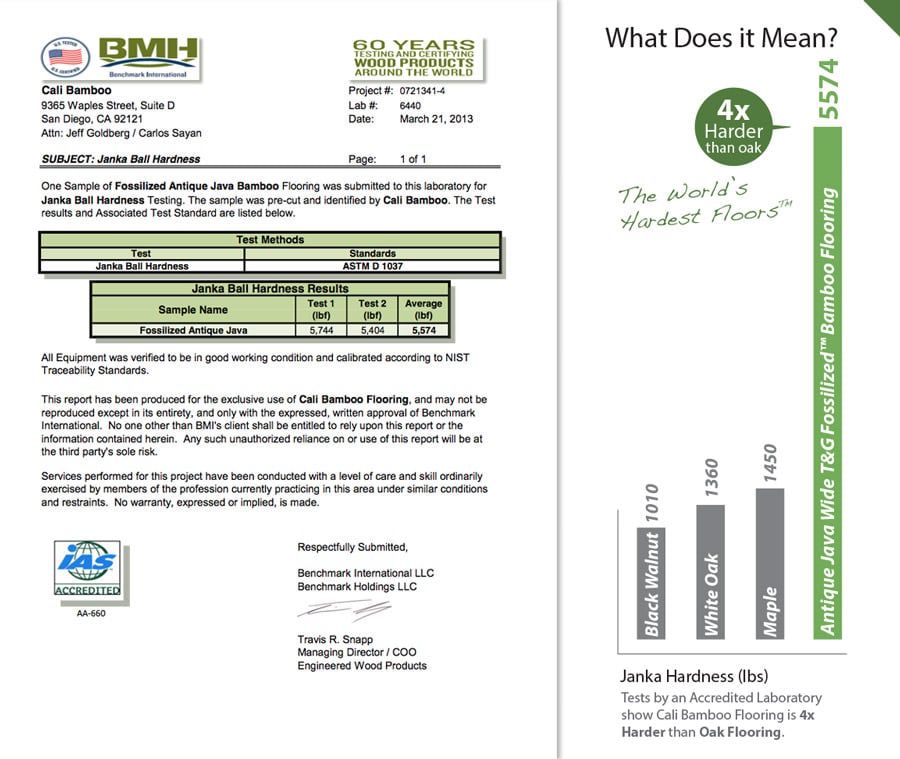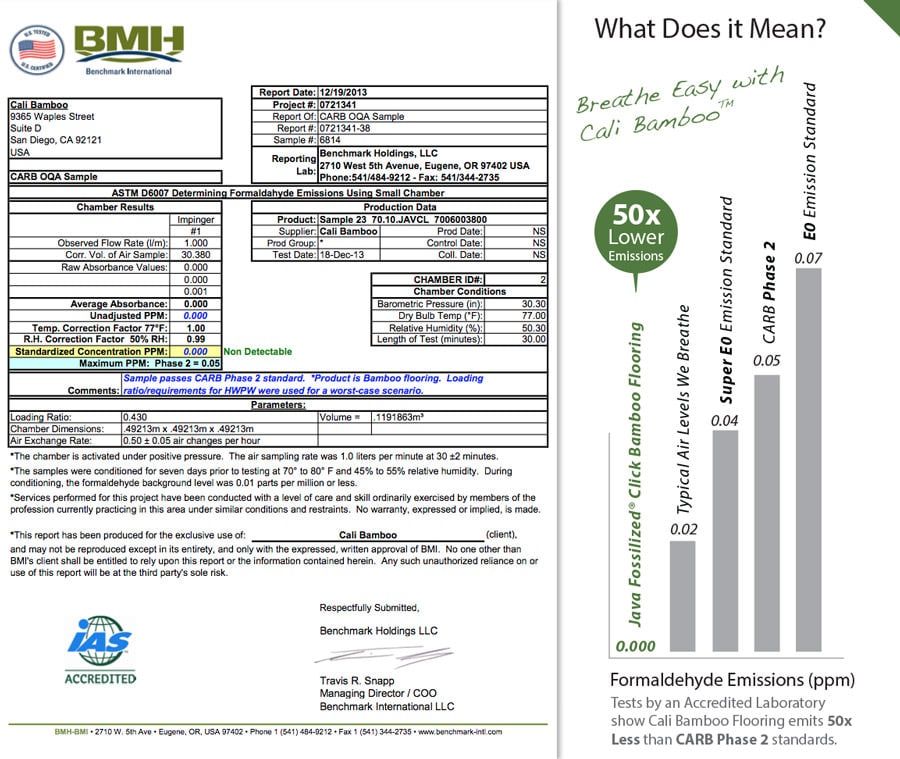If you’re considering bamboo flooring, chances are you’ve heard tons of conflicting info about the benefits of drawbacks of using bamboo material in your home or commercial space. A quick Google search will present you with an overwhelming amount of claims that will probably leave you scratching your head in confusion. The fact of the matter is that bamboo flooring has evolved a lot over the years, and even today not all bamboo flooring is created equally. This has led to a great deal of outdated or misinformation floating around that is simply inaccurate. There is no one-size-fits-all guide to bamboo flooring; manufacturing quality control, the bamboo’s maturity, and the quality of binders and adhesives used all affect a floor’s durability, VOC off-gassing, and overall consumer value.
Bamboo Flooring Facts
With everything you’ve heard about bamboo flooring, how can you be sure what is fact and what is fallacy? We’ve heard it all at Cali Bamboo, so today we’re presenting some bamboo flooring facts to debunk the top 10 bamboo flooring myths.
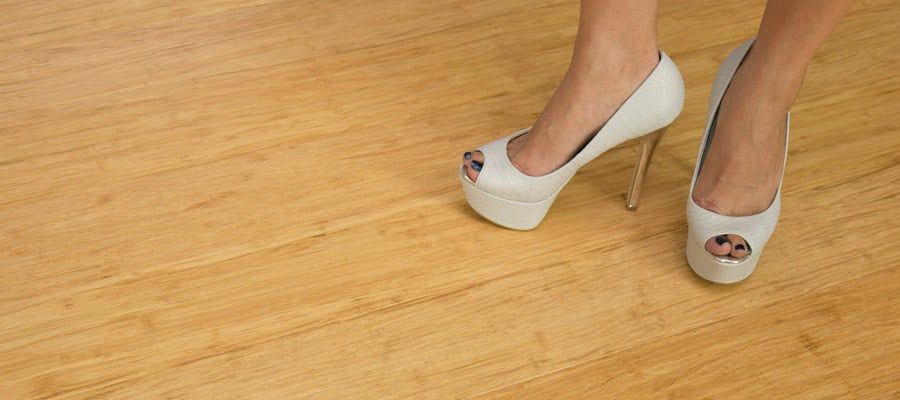
Myth #1: Bamboo flooring is soft.
The Truth: The first generation of bamboo floors to hit the market in the mid-1990s gave bamboo a bad reputation for being soft and susceptible to scratching and denting, but advances in manufacturing techniques over the years have actually made certain types of bamboo flooring far more durable than even the hardest traditional hardwoods. Strand-woven bamboo flooring debuted in 2007 and is over 3x more durable than vertical or horizontal bamboo flooring. An evolution in the manufacturing process from simply gluing bamboo strips together to utilizing steel hydraulic presses capable of applying intense heat and tens of thousands of pounds of force forming a dense block from which the flooring planks are then milled. Cali Bamboo’s Fossilized® strand woven process takes this one step further, compressing 30% more bamboo into each plank achieving 5x greater density.
The easiest way to determine a floor’s hardness and durability is to check its Janka Hardness rating. The Janka Hardness test works by measuring the force required to embed a 11.28mm steel ball halfway into a material. The higher the amount of force needed, the higher the Janka score and the more durable the wood. Cali Bamboo Fossilized® bamboo flooring has earned the title of The World’s Hardest Floors™ with a Janka Hardness rating of 5,000+ lbs. Learn more.
Buyer Beware!
Don’t just take a company’s word for it. Due to a lack of regulatory requirements, it’s quite common for companies to publish high Janka scores without providing any proof. When in doubt, assume all Janka information is unreliable without test results from an accredited testing facility.
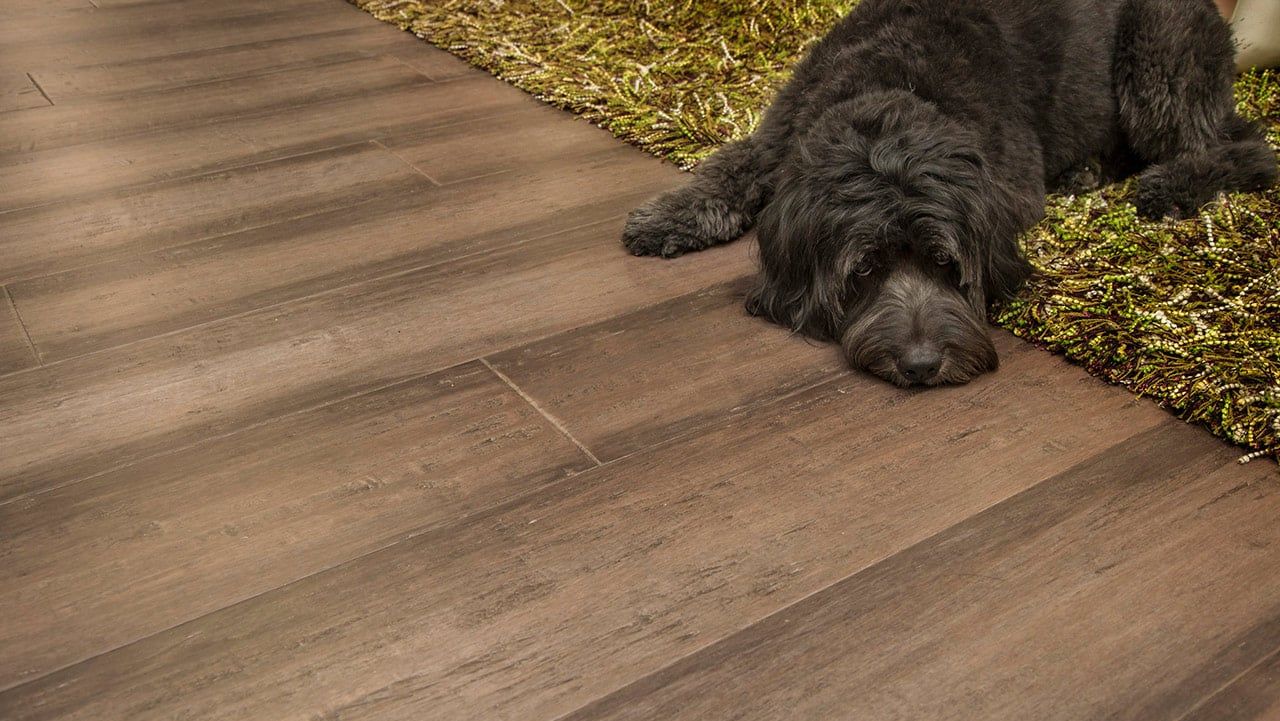
Myth #2: Bamboo flooring scratches easily.
The Truth: This might be true for low-cost bamboo flooring with a poor finish, but floors with several layers of an aluminum oxide finish are scratch-resistant. Cali Bamboo floors in particular are made with an industry leading 10-layer, water-based, topcoat system that helps them stand up to, well… life. Learn more.

Myth #3: Bamboo flooring contains formaldehyde.
The Truth: Formaldehyde is a naturally-occurring chemical found in just about everything- apples, shampoo, even the air we breathe. Recently there has been a great deal of concern over high levels of formaldehyde emissions coming from low-cost laminate flooring, which has been known to cause serious health problems. Unfortunately some manufacturers have gotten really good at cutting corners that don’t necessarily affect a floor’s appearance; two floors can look very similar while one can contain a host of mystery materials loaded with harmful chemicals in an effort to “save” costs. Generally, the lower the price point, the lower the product quality, and the higher chance for indoor air quality concerns. When shopping for new flooring for your home, always do your research and check third-party formaldehyde test results to protect your family’s health.
Buyer Beware!
Again, don’t just take a company’s word for it. Due to recent lawsuits filed against major flooring manufacturers regarding high levels of formaldehyde emissions, it’s quite common for companies to publish “Low VOC” or “Formaldehyde Free” labels without providing any proof. When in doubt, assume all emissions data is unreliable without test results from an accredited testing facility.
For years, Cali Bamboo has worked with the leading emissions detection laboratory Benchmark International (BMH), maintaining transparency by posting our results online. Test results show that several of our floors register formaldehyde concentration levels as “Not Detectable”, with less than 0.000 parts per million (PPM). The floors with detectable levels are still 50 times lower than the strictest California Air Resources Board (CARB) Phase 2 standards 0.05 PPM. In fact, all Cali Bamboo flooring formaldehyde emission levels are at least half the levels found in the typical air we breathe. Learn more.
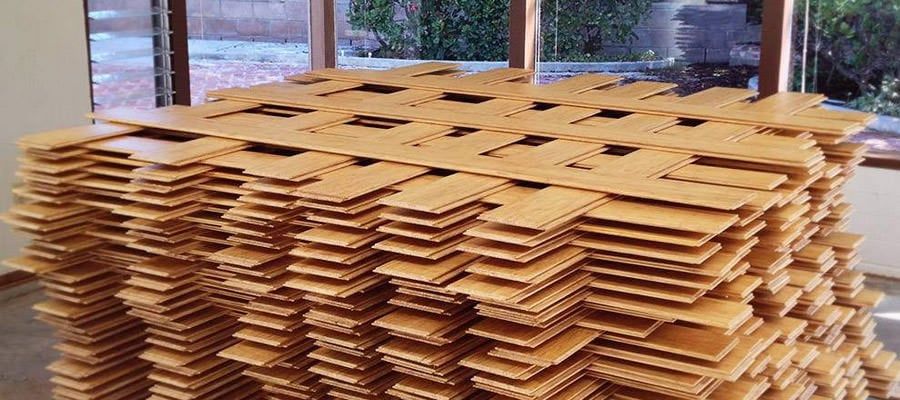
Myth #4: Bamboo flooring is unstable- it expands/contracts more than other natural hardwoods and doesn’t do well in dry or humid climates.
The Truth: Bamboo flooring behaves no differently than other hardwoods. Because it is a natural product, it will expand as it absorbs humidity and shrink as the air grows drier. But before you rule out bamboo for your extremely dry or humid climate (like Colorado or Florida), keep in mind that gaps and distortion can be avoided simply by properly acclimating the flooring prior to installation. We recommend acclimating your flooring for a minimum of 5 days, but locations with extremely low or high humidity will require a longer acclimation period. Learn more about acclimating bamboo flooring in extreme climates.

Myth #5: Bamboo flooring is not eco-friendly because it has to be shipped from outside the United States.
The Truth: Bamboo flooring is typically harvested in the indigenous mountains of China, so it does need to be shipped overseas. However, it is important to note that most hardwood comes from all corners of the world- Deciduous hardwoods such as Oak typically come from Europe, Japan, New Zealand or Chile, and Evergreen hardwoods such as Mahogany or Walnut can come from places as far as Africa, Burma, or India, to name a few. Very little hardwood is actually harvested in the United States, so no matter what type of wood flooring you choose- bamboo or otherwise- it will most likely need to be shipped from overseas. That being said, you can counterbalance the carbon externalities incurred from shipping overseas by choosing a floor made from a rapidly-renewable material such as bamboo, instead of old-growth hardwood.
What makes bamboo green?
Bamboo is the fastest growing plant on Earth, regenerating to full mass in just 6 months! Bamboo also yields 15x more material than traditional trees, and can be continually re-harvested every 3 years without damaging the plant system or surrounding environment. Learn more about what makes bamboo green. Additionally, Cali Bamboo has greened our manufacturing processes by capturing the emissions generated from treating/drying our products instead of releasing them into the atmosphere, creating our own dedicated waste water treatment plants for our manufacturing facilities, and utilizing boxes and bags made from 100% recycled materials.
Need more reasons to go bamboo? Traditional hardwood prices have been on a rapid incline over the past few years and the proliferation of the poaching of wood from protected lands, particularly in eastern Russia, further clouds an already dark industry. Even for domestic hardwoods that do not need to be shipped from overseas, logging has destructive effects on the environment. When weighing the environmental costs of shipping a product overseas vs. deforestation, the carbon equation leans more favorably towards shipping. In fact, using any material other than traditional old-growth hardwood is a step in the right direction that decreases our planet’s dependency on deforestation.
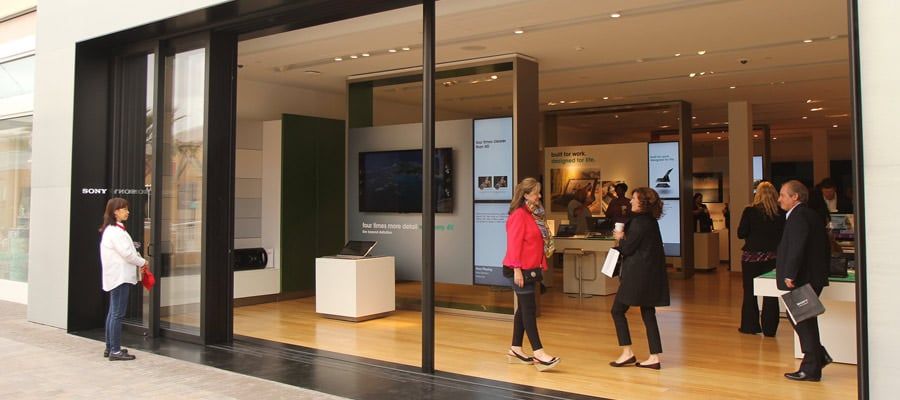
Myth #6: Bamboo flooring is not suitable for commercial applications.
The Truth: Depending on the quality, Janka Hardness rating, and finish, bamboo flooring can be an excellent choice for commercial applications. With a Janka Hardness rating of over 5000+ lbs., Cali Bamboo Fossilized® bamboo flooring effectively holds up to high-traffic areas. Sony put our Natural Fossilized® flooring to the test by installing it in over 30 stores across the country, where it remains in amazing shape even after years of heavy foot traffic. One manager in San Diego said “The floors look great and are holding up very well. There is a noticeable difference in the durability between this bamboo and the other bamboo that was installed previously.”

Myth #7: Bamboo flooring cannot be installed over concrete.
The Truth: Bamboo flooring can absolutely be installed over concrete, just be sure to apply a concrete vapor barrier first to prevent mold, mildew, and other moisture-related issues. Cali Bamboo recommends Titebond 531+, which minimizes moisture transferred from the slab to your floor by 75-90%. Learn more about concrete vapor barriers.
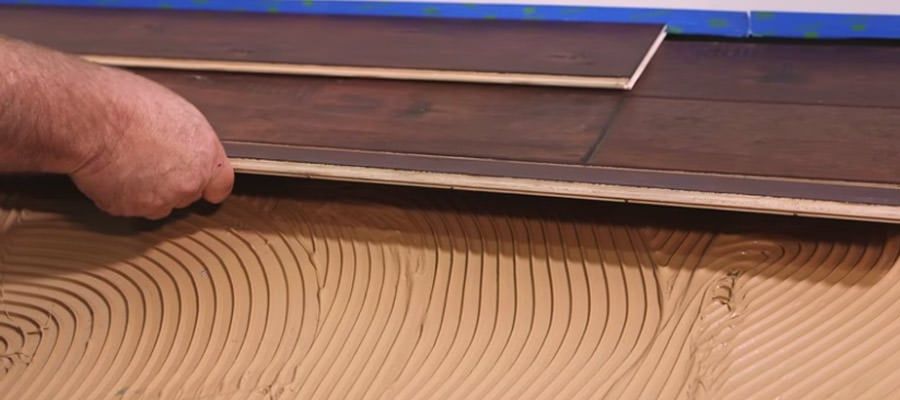
Myth #8: Bamboo flooring cannot be glued down.
The Truth: Bamboo flooring can be installed using a number of methods, including glue down, floating, and nailing. The Glue Down method is commonly used when installing over concrete that is on or above grade. Learn how to install bamboo flooring using any method.

Myth #9: Bamboo flooring cannot be refinished.
The Truth: Bamboo can be refinished if performed by an experienced flooring refinisher. Most engineered and solid bamboo flooring should be able to be refinished several times should you ever need to. As long as a floor is kept clean and free of debris, the floor’s scratch resistance and hardness will keep it looking great for years to come.

Myth #10: There are not many color options for bamboo flooring.
The Truth: There are endless color options for bamboo flooring! Cali Bamboo alone has over 30 different colors and styles to choose from. Browse the selection here and find a floor to fit your style!
